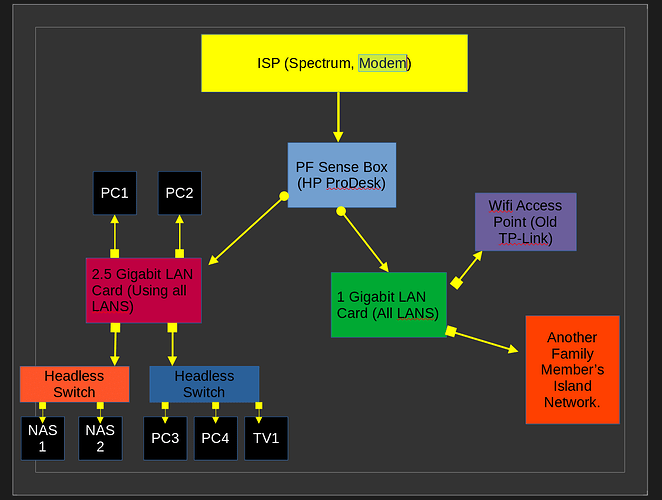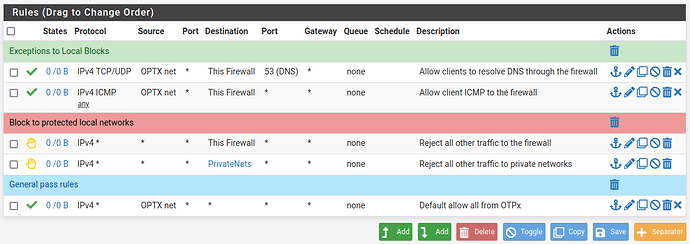Hello,
I am a new user to PFSense and would appreciate some help. I was able to get through the main install very quickly. I was able to setup a LAN and a WAN. I even got my Realtek 8125 2.5G Ethernet NIC installed through this process.
First I downloaded the driver via pkg manager in the shell
fetch -v https://pkg.opnsense.org/FreeBSD:13:amd64/snapshots/latest/All/realtek-re-kmod
Then I ran this command in the shell to install it.
pkg install -f -y realtek-re-kmod
Then I got it to load on start up by cd-ing in the shell to /boot/, installing nano and then opening and editing my loader.conf. There I added my two lines
if_re_load=“YES”
if_re_name=“/boot/modules/if_re.ko”
Then I also made a loader.conf.local file with those same lines. I was able to sucessfully install my NIC. This also takes a WAN connection.
I also have an Intel 4 port One Gigabit NIC that I have my LAN port on. I mapped my WAN port to the motherboard NIC.
However every time I try to add a second interface, whether it be LAN/VLAN, I can’t get internet connection through that LAN or VLAN.
Steps that I have tried to get internet connection.
Specifying Static IPv4 IP for each VLAN/LAN, port 24.
Then I turned on the DHCP server and specified ranges within the custom ranges.
Then I added the firewall rules to allow all outgoing connections from IPv4 and IPv6.
I am still only able to get internet connection on my main LAN port.
What more can I do to get this working? Which log files do I have to be on the lookout for?
Here is my computer specs if this matters.
HP ProDesk 600 G1
Intel Core i5 4590
16GB of DDR3 1600 RAM
60GB Kingston SSD NOW! 2.5 HDD
iGPU
x1 Realtek 2.5 Gigabit 4 Port RTL8125 NIC
x1 RTL8111H(S) 4 Port 1 Gigabit NIC
I also tried a Intel I340-T4 Fujitsu D2745-A11 GS 3 NIC but also the same problem. So I don’t think it’s an NIC issue.
I was also able to at times be able to ping Google.com, but never actually be able to connect to the internet. Maybe a DHCP error?
If you read this far, thanks for reading and I hope someone can help me out.


